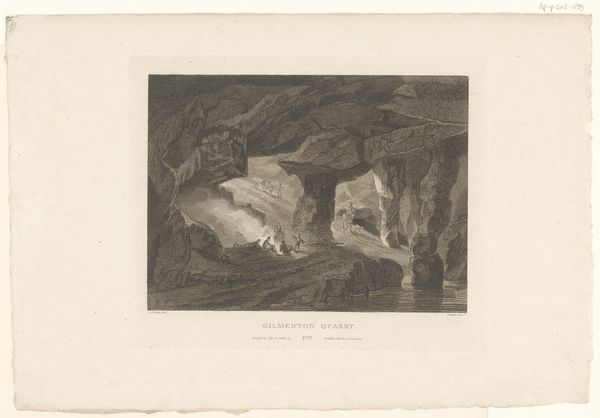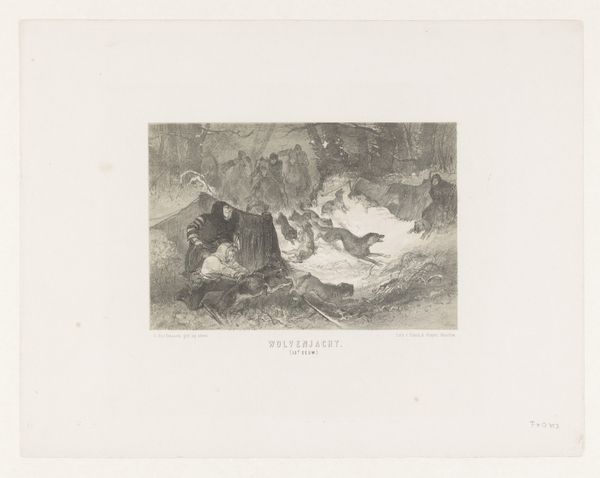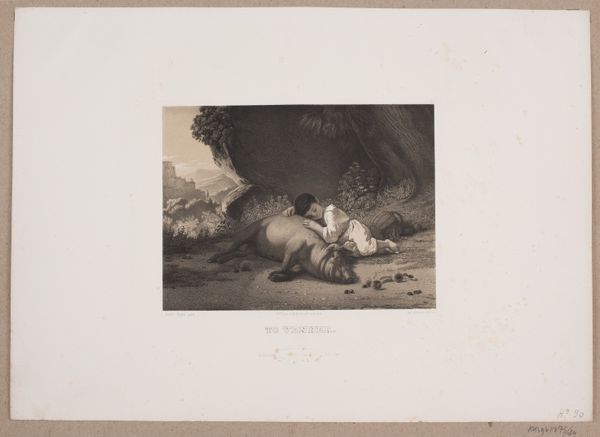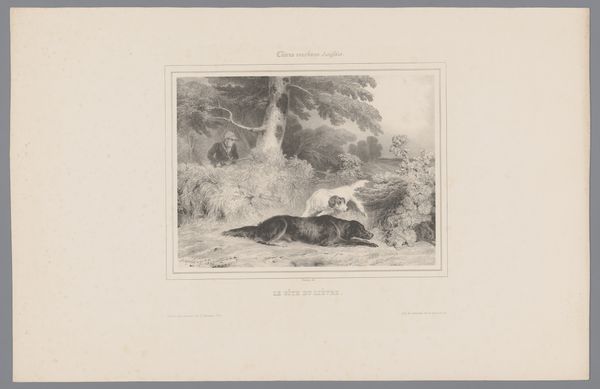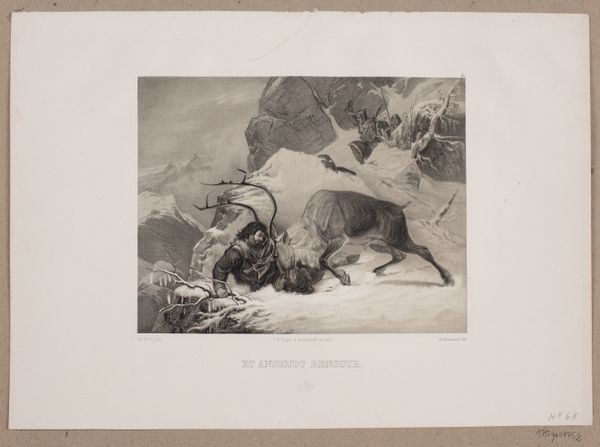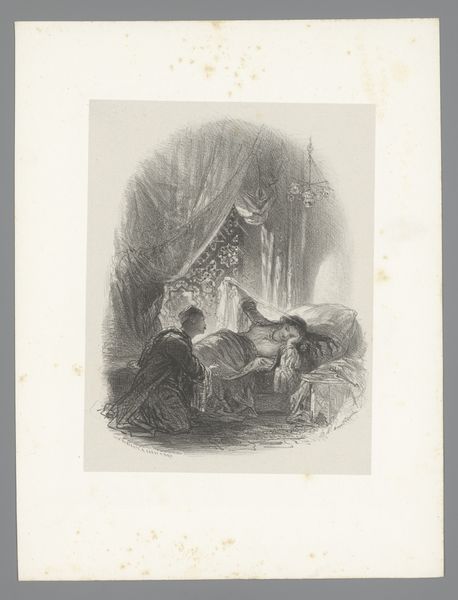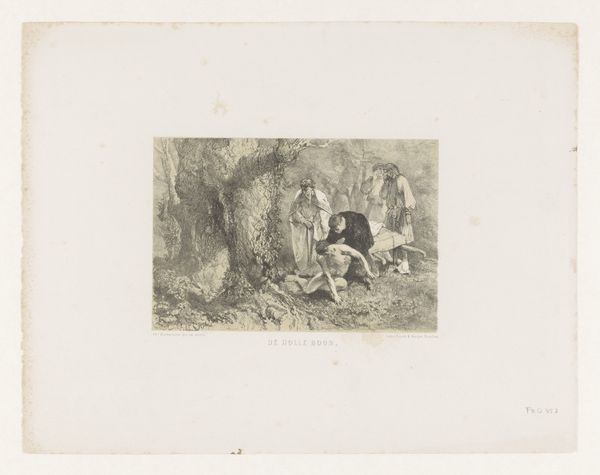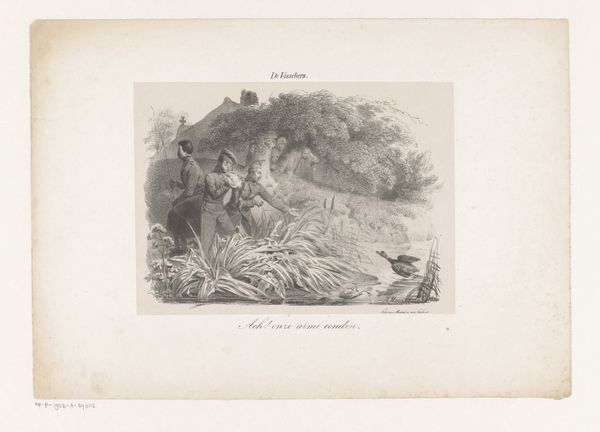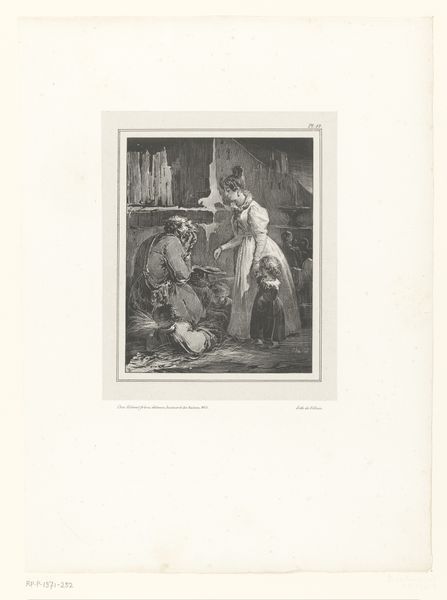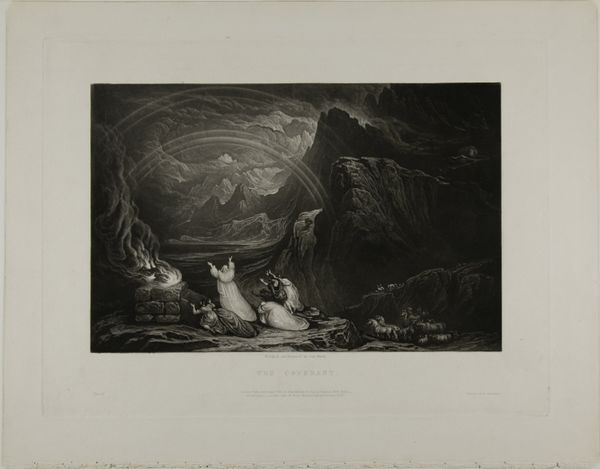
drawing, print, engraving
#
drawing
# print
#
forest
#
romanticism
#
genre-painting
#
engraving
Dimensions: height 273 mm, width 365 mm
Copyright: Rijks Museum: Open Domain
Curator: This is "Two Figures and a Hunter with Dog in a Forest," created by Jean-Baptiste Madou in 1834. It's currently housed at the Rijksmuseum. The work is a drawing and print, more specifically an engraving. Editor: It feels very intimate. I immediately notice the light and shadow play—it's a subdued and melancholy scene, isn't it? You can almost smell the damp earth and foliage. Curator: Madou really was a master of the print medium. Notice the fine lines and the textures he manages to create, mimicking a lush forest environment through what are effectively industrial processes of reproduction. This was mass production but aimed at a refined audience. Editor: The "hunter," seems weary, burdened—but maybe this reflects a broader socio-economic narrative of the time. The Industrial Revolution impacted both landscape and labor. Do you think the setting might symbolize lost innocence, exploited resources, and maybe the eroding traditions of rural life? Curator: I think that's an insightful read. It brings forth questions of value: the value of labour, the value of leisure, and how both are reflected and refracted through the art market and broader industrial output. The detail, achieved through mass production of printing, would’ve allowed the burgeoning middle classes to engage with the pastoral, reflecting a relationship to production which may have otherwise eluded them. Editor: The composition reinforces that reading, too. The figures are almost hidden within this imposing forest. Their existence, like many at that time, seemingly insignificant compared to this immense, unknowable…thing. Curator: It’s fascinating how he uses that sense of depth, achieved through carefully controlled light and shade, to make those figures both prominent, drawing us to the subjects, but also secondary to the forest. And that forest would be represented through printed images made to a large buying audience through advances in the production line. Editor: Yes, very contradictory. Well, I certainly have a deeper appreciation of Madou's skill and the cultural tensions that this seemingly simple work embodies. Curator: Indeed. It highlights how so-called "fine art" doesn’t exist in a vacuum and the social conditions inherent in both subject and means of production.
Comments
No comments
Be the first to comment and join the conversation on the ultimate creative platform.
